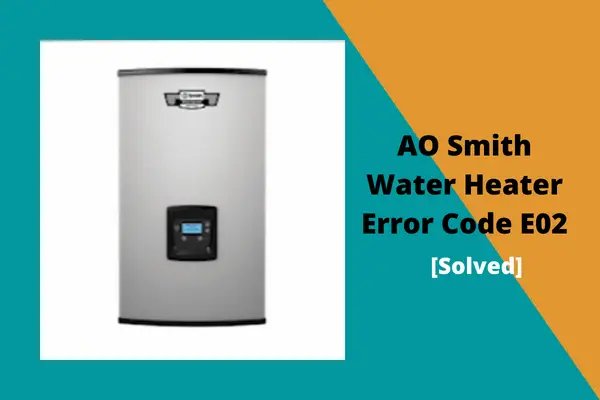
So, let’s break it down. The “SE” error code on your A.O. Smith water heater is essentially an alert from your device saying, “Hey, something’s not right here!” It’s your water heater trying to communicate with you, similar to how a check engine light works in a car. The “SE” code points to a general fault that could be related to several underlying causes, and that’s what we’re here to explore. Understanding these causes can save you a lot of hassle and potentially some money on repairs.
Understanding the SE Error Code
The “SE” error code is a common issue that homeowners may face, especially if you’re using an electric model. Think of it as your water heater’s way of waving a little red flag. Basically, this code often relates to a sensor error, which means the heater is having trouble reading its internal temperature. Temperature sensors in these devices are like the thermostat in your home – they regulate and monitor temperature to ensure everything stays within the desired range.
When the sensor isn’t working correctly, it can cause your heater to behave unpredictably. It’s a bit like when your car’s speedometer stops working; you can still drive, but you’re unsure if you’re going too fast or too slow. In water heaters, if the sensors misread the temperature, it might shut down the heater to prevent overheating, or it might underheat, leaving you with only lukewarm water.
Next steps are crucial here. If your water heater displays the SE error code, it’s time to take a closer look. Usually, this might involve a simple reset, but sometimes it calls for a part replacement. In some cases, just a loose wire could be causing all the trouble.
Sensor Failure and Its Impact
The most common culprit behind an SE error is sensor failure. These sensors are like the eyes and ears of your water heater, constantly gauging and adjusting to ensure optimal performance. When they fail, it’s like trying to navigate a ship without radar—you’re just guessing, and that can lead to serious issues if not corrected in time.
So, what causes these sensors to fail? Often, it boils down to wear and tear. Imagine how many times your water heater has turned on and off over the years; that’s a lot of work! Over time, sensors can degrade, much like how a computer might get slow after years of use. Sometimes, mineral buildup from hard water can also affect sensor performance, similar to how plaque might clog your arteries. Regular maintenance, like flushing the tank, can help prevent this, but it’s not guaranteed to ward off sensor problems entirely.
If you do suspect a sensor issue, it’s generally a good idea to consult with a professional technician. They have the tools and expertise to diagnose the problem accurately. In some instances, they might need to replace the sensor to restore your heater to full functionality.
Electrical Issues and Troubleshooting
Electricity, being the powerhouse behind your water heater, could also be a contributing factor. Electrical issues can range from a tripped breaker to faulty wiring within the unit itself. Imagine trying to plug a charger into a socket with no power – that’s what your water heater experiences in electrical failure.
First things first, check your breaker box. Sometimes, all it takes is flipping a switch back on to resolve the error. If that doesn’t work, take a look at the wiring. Loose or corroded wires could be the villain here, interrupting the flow of electricity needed for your sensors to function properly. This step might be a bit daunting for beginners, so calling in an electrician could save you a lot of trouble and possible hazards.
Another possibility is a faulty control board. This board is like the brain of your water heater, and any hiccups here could set off an SE error. While replacing a control board is a task best left to the pros, it’s helpful to know that this might be the underlying cause should simpler fixes not resolve the issue.
Preventative Measures and Next Steps
We’ve delved into what causes the SE error code, but learning how to prevent this issue can be equally valuable. Regular maintenance is the golden rule here. Just like how you’d change the oil in a car, your water heater also needs regular check-ups to keep it running smoothly. By scheduling annual maintenance, you can catch potential issues before they evolve into full-blown problems.
Cleaning the tank to prevent mineral buildup is another crucial step. If you’re in a hard water area, consider installing a water softener to help minimize deposits. It’s like putting a filter on your coffee machine to maintain its performance. Also, keep an eye on any symptoms like unusual noises or a sudden change in water temperature as these can be precursors to sensor issues.
Lastly, always have a list of reliable technicians handy. When the SE error crops up, a quick call can save you from a lot of cold showers and frustration. Investing a little time in preparation can save you a lot of discomfort down the line. So, stay proactive, and you’ll keep your A.O. Smith water heater running without a hitch for years to come.